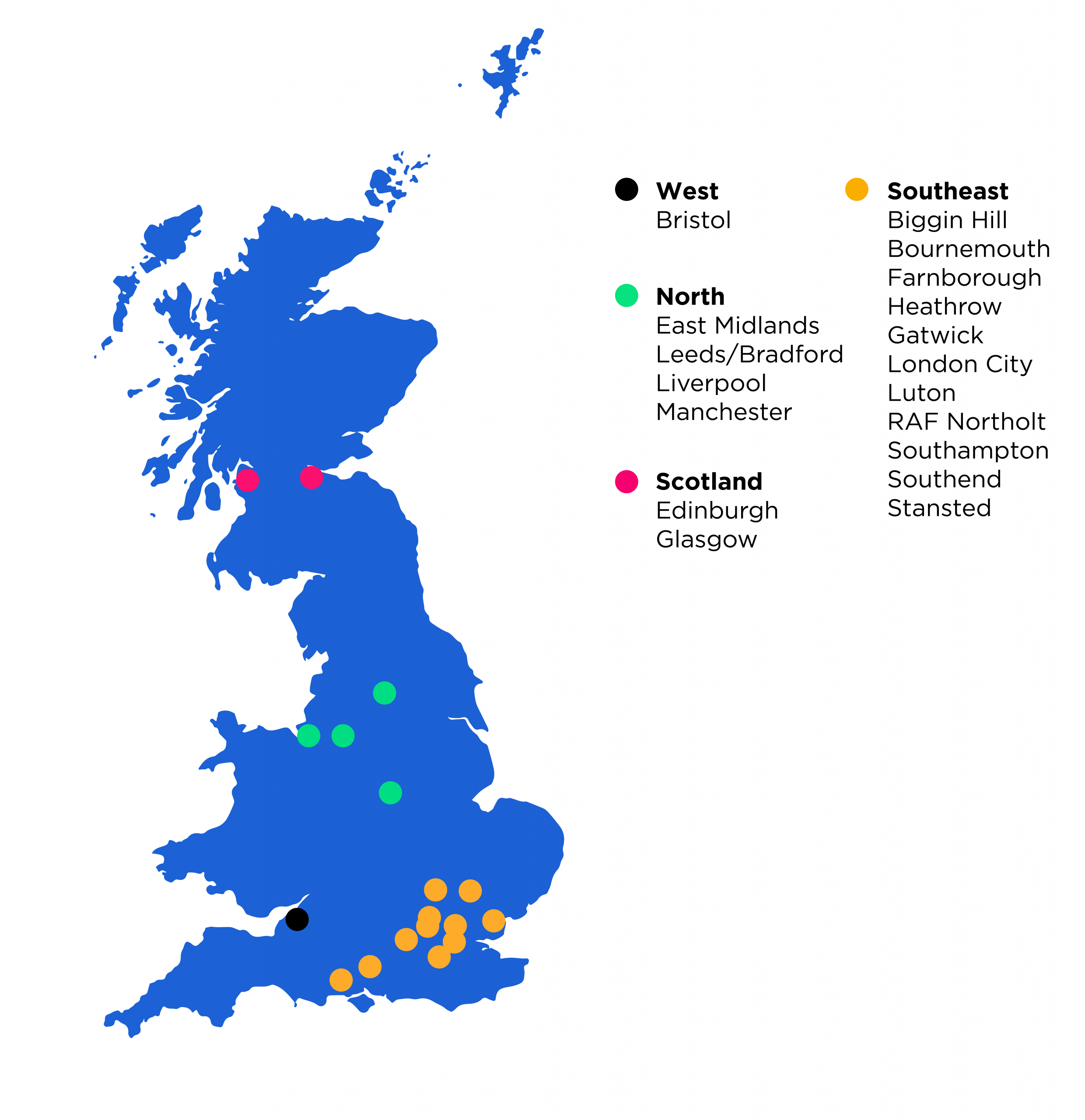Airports involved
There are almost 20 airports involved in the airspace programme, plus NATS, that ACOG are coordinating.
To ensure the programme progresses as quickly and efficiently as possible, the airports have been grouped into four clusters based on their location.
These are:
- Scotland
- Northern England
- The West of Britain
- London Area (South East)

The Masterplan is organised into clusters so that the simpler changes can be deployed sooner, releasing benefits earlier. The timelines for making airspace changes are generally shorter for the simpler clusters, like Scotland, where there are fewer main airports and less complex interdependencies. Airspace modernisation will take longer in the more complicated clusters, like the South East of England, with a larger number of airports and more challenging interdependencies. Without a clustered approach all the ACPs would move at the pace of the slowest. This would delay improvements in areas that can deliver faster.
Why aren’t all airports in the Airspace Change Masterplan?
Only ACPs that are considered strategically important to achieving the airspace modernisation objectives are included in each cluster. These ACPs were identified in the Iteration 2 of the Airspace Change Masterplan.
Some larger airports, like Birmingham, Newcastle International, Aberdeen and Inverness are not currently included in the masterplan because modernising the routes that serve their operations is not expected to make a significant national or regional contribution to achieving the airspace modernisation vision. These airports, and others (for example, Belfast International, Belfast City, Norwich and Newquay) do not form part of a coordinated overall airspace design and they do not share interdependencies with the existing masterplan ACPs.